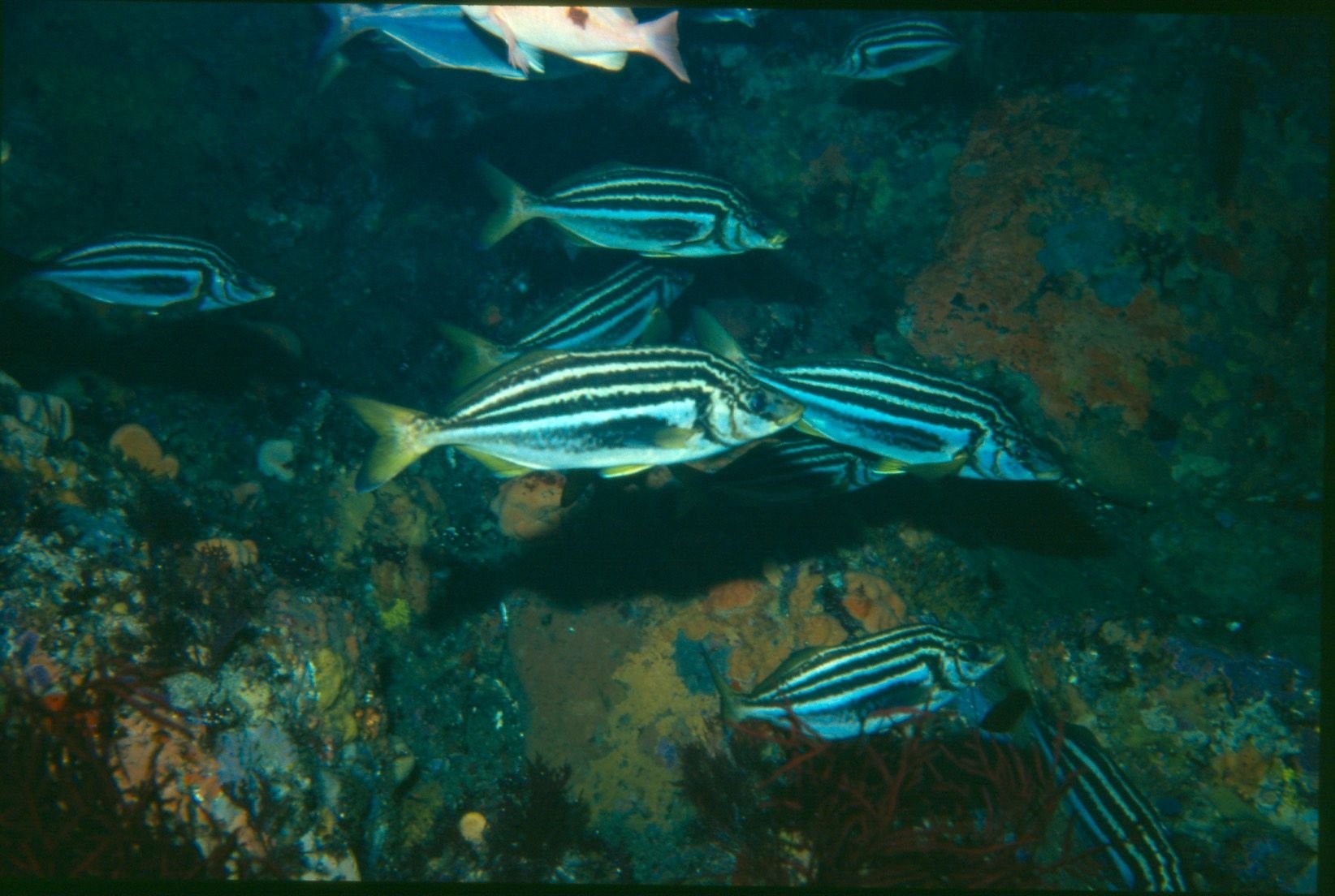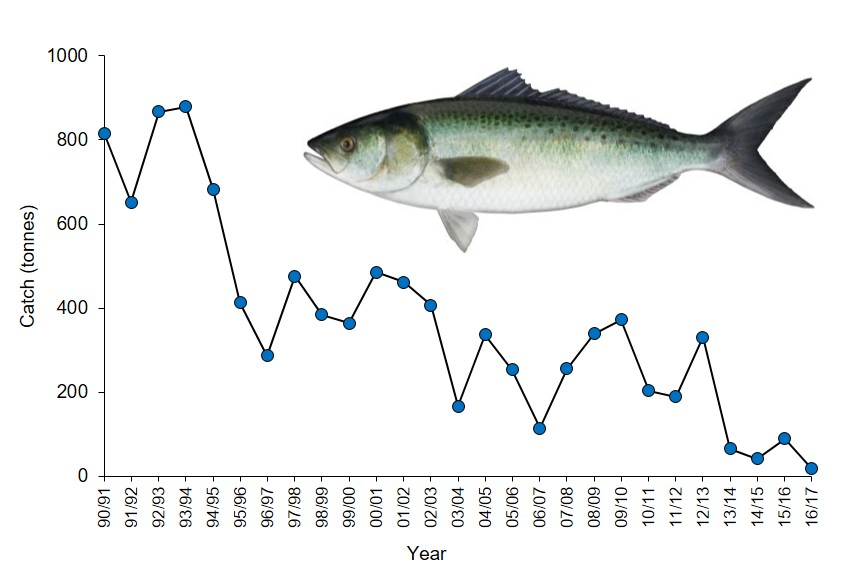
The Tasmanian Scalefish Fishery is a multi-species, multi-sector commercial fishery operating in State waters and encompassing a wide variety of capture methods.
The latest IMAS report on the fishery shows that the total commercial catch of finfish in 2016/17 was approximately 313 tonnes, a decline of 35 tonnes compared to 2015/16.
This reduction was due mainly to decreased effort and landings of Australian Salmon, Garfish and Gould’s Squid. Catch is useful as indicator of size of the fishery (Image: Striped Trumpeter) but usually varies independently of the size of the stock – assessing the stock status requires additional information.
The highest landings of finfish in 2016/17 included Bluethroat Wrasse (60.1 t), Tiger Flathead (74.0 t), Eastern School Whiting (26.0 t), and Australian Salmon (18.9 t). Large quantities of Gould’s Squid (175.6 t) and Southern Calamari (122.6 t) were also landed, with the latter harvested primarily from northern areas of the State.
Australian Sardine was included in the assessment for the first time because developmental permits have been issued for this fishery in Tasmania, although very little catch has been taken to date. Australian Sardine has had a relatively long history of commercial exploitation in Mainland State and Commonwealth waters, and is sometimes present in large quantities in Tasmanian waters.
Species were assessed with regards to the national stock status categories (Sustainable, Transitional Recovering, Transitional Depleting, Overfished and Undefined).
In 2016/17, a total of ten species were classified as Sustainable (Australian Salmon, Australian Sardine, Tiger Flathead, Gould’s Squid, Jack Mackerel, Jackass Morwong, Yelloweye Mullet, Eastern School Whiting, Southern Calamari and Wrasse). This means the stock biomass (or proxy) is at a level that will ensure that future recruitment is adequate and fishing pressure controlled.

Image: Australian Salmon catch through time. The history of commercial catch of this species is similar to many other Tasmanian scalefish with declines in commercial catch. Other information (such as effort levels) was also available and used for the assessment resulting in Australian Salmon being classified as Sustainable.
Two species were classified as Transitional Depleting: Sand Flathead and Southern Garfish. This means that while stock biomass is not yet recruitment overfished, fishing pressure is too high and is moving the stock biomass towards an overfished state.
Two species were classified as Overfished: Bastard Trumpeter and Blue Warehou. This means that the mature adult population has been depleted to a level that average recruitment is significantly reduced.
Six species could not be classified and are listed as Undefined (Barracouta, Flounder, Leatherjacket, Longsnout Boarfish, Snook, and Striped Trumpeter). This typically occurs where there is little data other than catch. In each of these fisheries, the commercial catch is very small and effort data has little meaning because it is so sparse or not targeted. IMAS is attempting to collect more data on striped trumpeter through sampling frames in an attempt to move the classification out of “undefined”.
Of those species that could be assessed, no classification changes were made from the previous year.
Banded Morwong have been considered in a separate report, and can be found here.